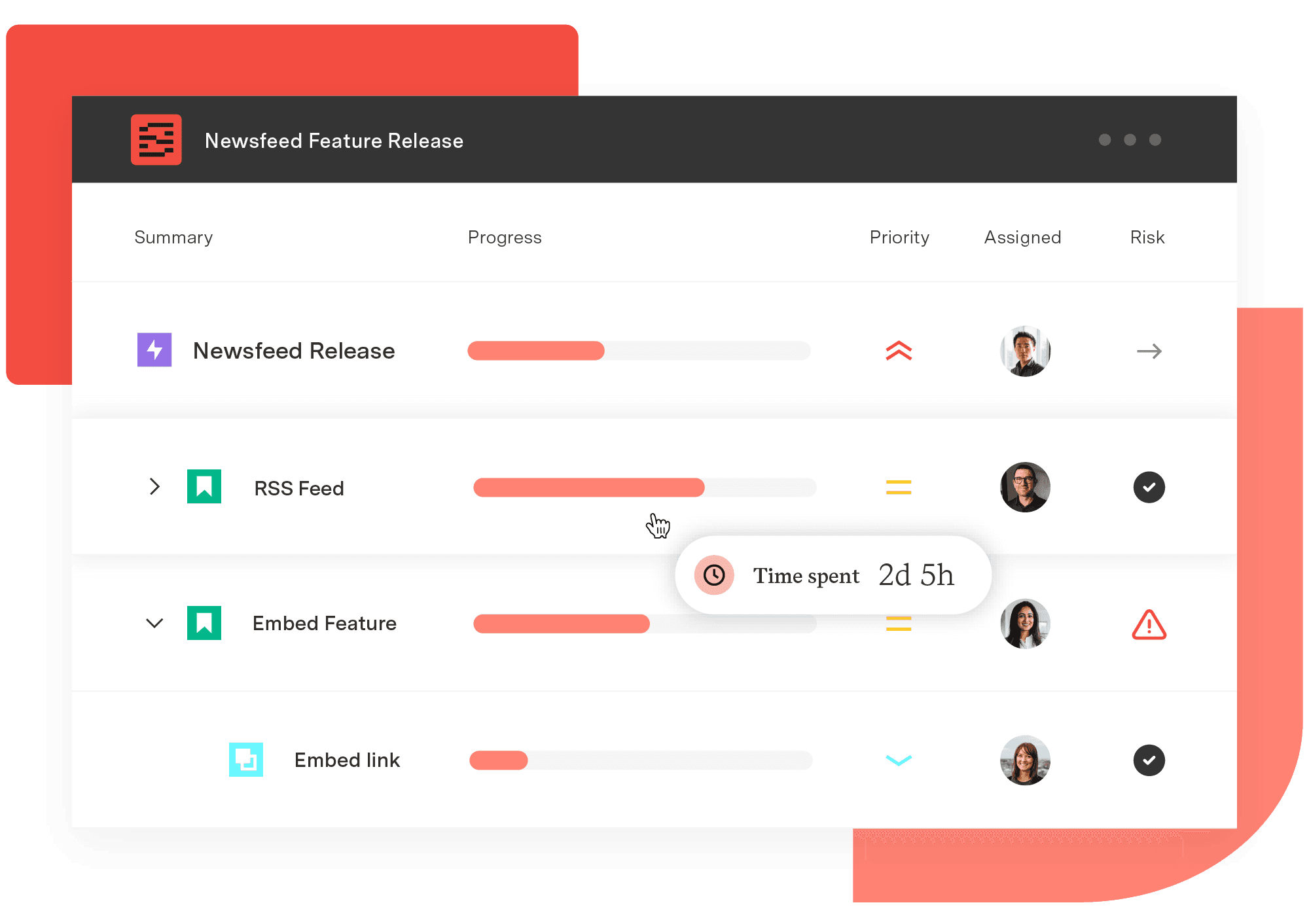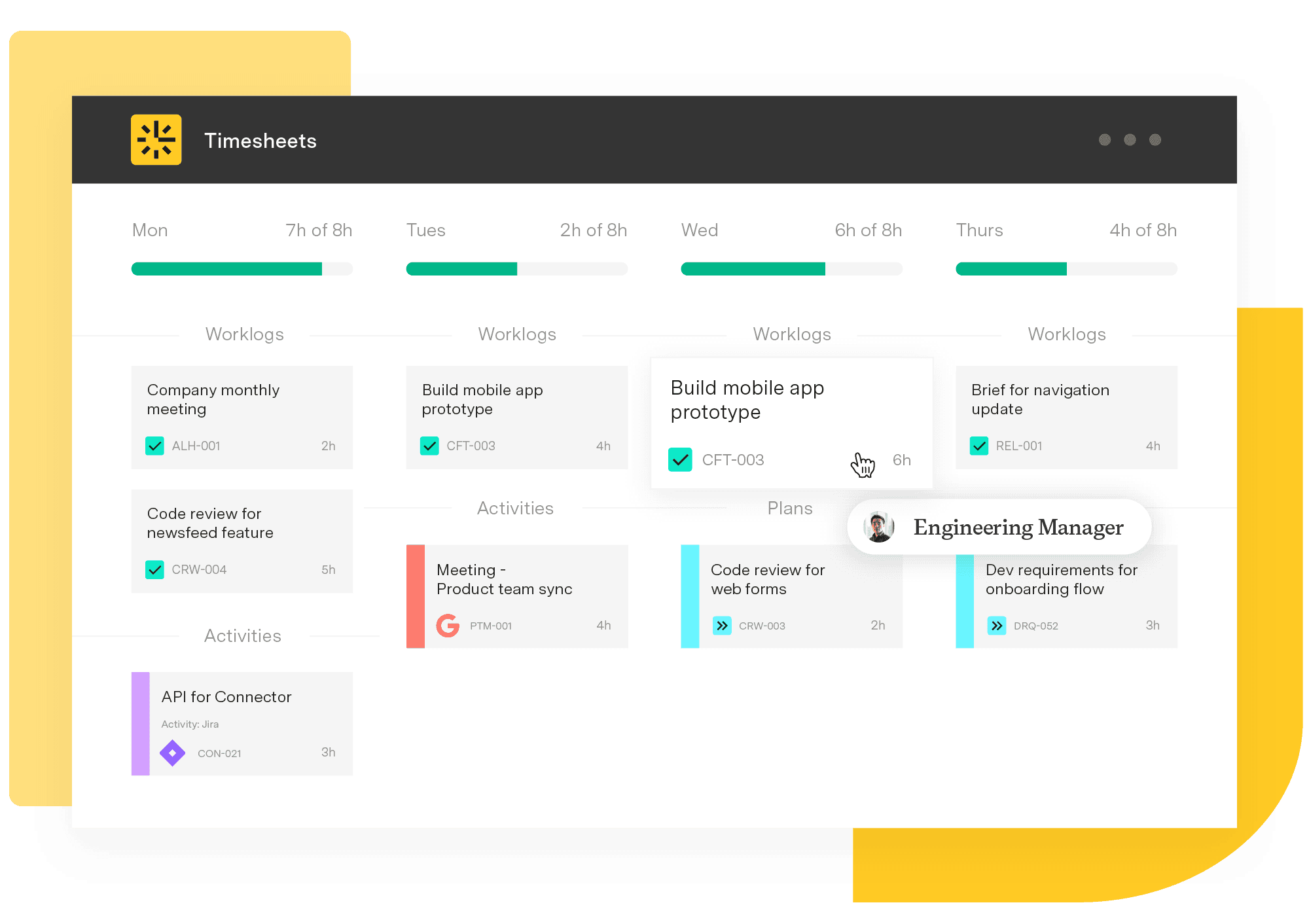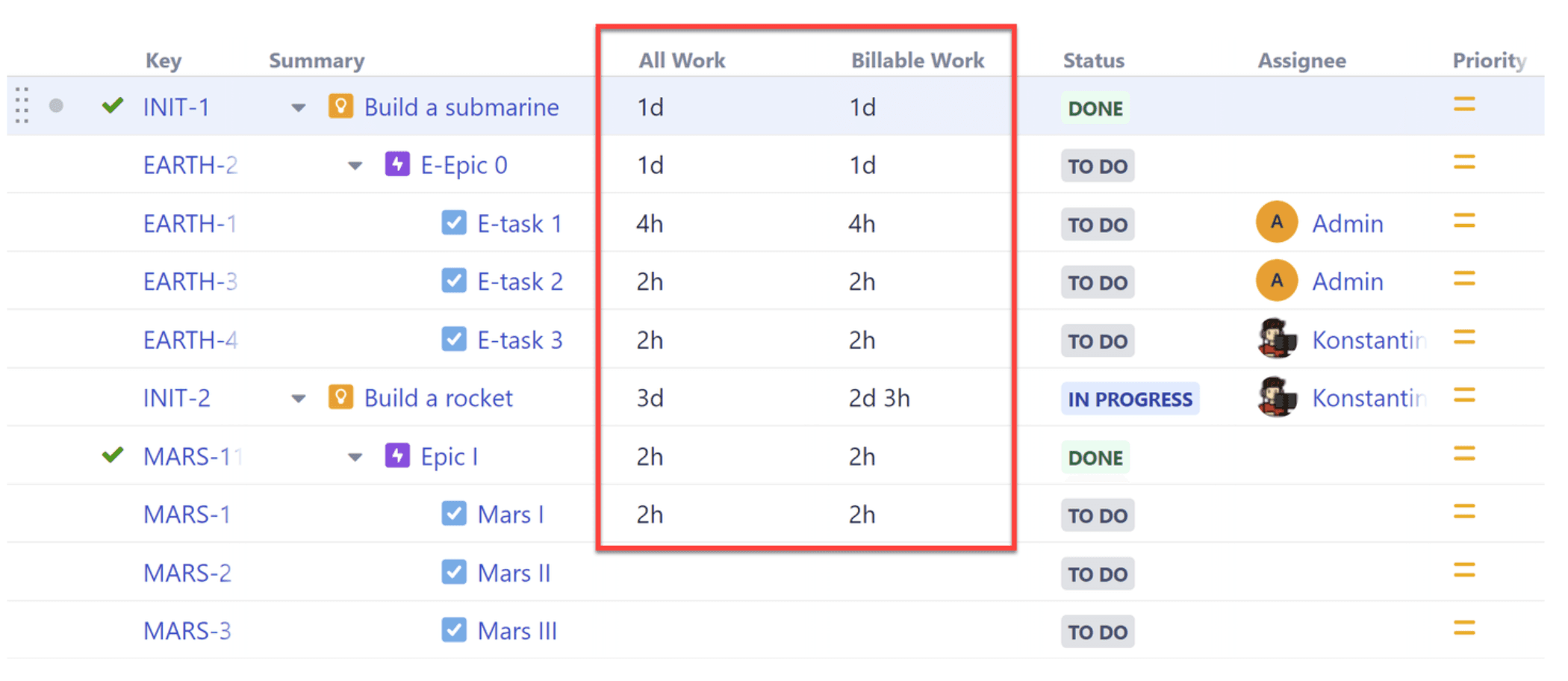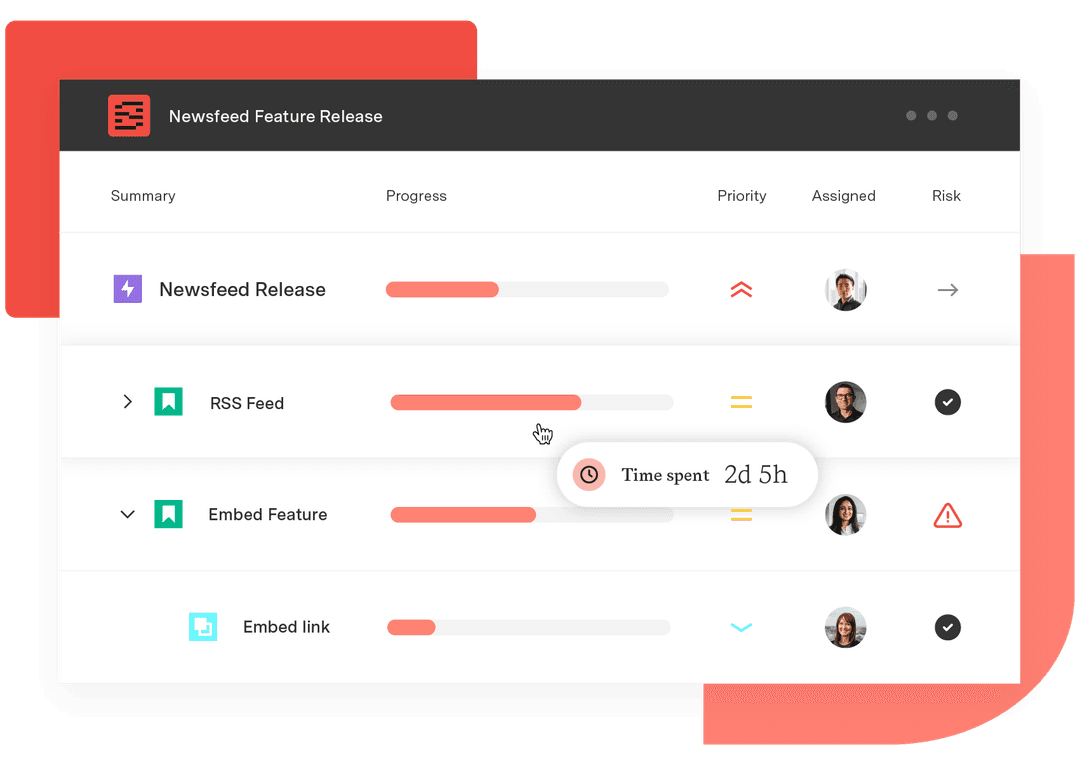Bringing structure to time tracking and resource management
Tempo Team
Looking for a better way to analyze time spent by specific users, track progress across multiple projects, or generate custom reports?
Try combining Structure, the #1 project portfolio management software for Jira, and Timesheets, the #1 time tracking software for Jira. Tempo’s flexible, modular, and scalable approach to portfolio management means you can pick and choose the solutions that are right for you. And, if you opt for both Structure and Timesheets, you’ll get a robust way to handle everything in Jira, from planning, to day-to-day work, to tracking time once the project is done. The integration has three main components:
Adding a custom Tempo ‘work logged’ column to a structure allows you to track work time and billable hours alongside your project data, and aggregate those values up your hierarchy.
Grouping issues by Tempo account, team, and contributor means you can aggregate and analyze work data in a way that aligns with your organizational structure and goals.
Utilizing billable time and worklog properties in ‘Formulas’ empowers you to customize and derive actionable financial insights from your project data, enabling better financial management and decision-making.
You can learn more about these components and how to achieve them on our dedicated help center pages. In simple terms, integrating both solutions means you can answer the question “How much time and effort are we spending on this project?” in the same views where you organize and manage your project tasks.
What are Timesheets and Structure?
If you’re not familiar with all of Tempo’s solutions, here’s a quick overview of both: Structure is a project portfolio management app for Jira that provides a spreadsheet-like view of issues. From there, teams can manage projects, programs, and portfolios in one place, in whatever issue hierarchy they prefer, and group, filter, and sort as they need. Structure is beloved by teams because they can see multiple projects in one dashboard (and can see time logged across them with the integration with Timesheets).

Timesheets is a business-critical tool not just for tracking time, but for categorizing time spent (such as billable vs non-billable hours) and supporting reporting functions such as invoicing and CapEx/OpEx reporting. As the leading time tracking tool for Jira, downloaded by over 30,000 teams, Timesheets users love how simple it is to log time thanks to its integration with calendars, IDEs, and other tools. Logging time now takes minutes per week, and not hours.

Streamline time tracking and reporting with Structure and Timesheets
This integration between the products combines Structure’s custom issue hierarchies and real-time project insights with Timesheets’ data on the time logged – and, if applicable, billed – for each project or task. That means Timesheets users can use Structure to group, filter, and sort time tracking data – including billable hours – by any Jira field, to create any custom report they need. “We can compare in real-time what has been planned and what's happening in reality, and we can show it in all contexts and in all the hierarchies within Structure,” Hans said. “Timesheets and Structure really are a perfect match.” René Hans, Project Management Expert, TTTech
The result? Less admin and more accurate data. Whether it’s tracking billable hours, optimizing resource allocation, or creating custom reports tailored to your unique needs, this integration empowers you to manage your projects with precision and confidence.
Integration spotlight: Tempo work logged column
The Tempo “Work Logged” column unites Structure and Timesheets, offering users a complete view of project status and time management within a single interface. Instead of toggling between different tools, you can now see both logged and billable time directly in your project overviews in Structure.

This integration allows you to roll up time data from individual tasks to high-level projects, providing valuable insights at both the project and portfolio levels.
Whether you need to analyze time spent by specific users, track progress across multiple projects, or generate custom reports, the combination of Structure’s flexible hierarchies and Timesheets’s detailed time tracking makes it easy.
Ready to enhance your project management capabilities? If you’re new to Structure, discover how it can transform your portfolio management. If you’re already using Structure and Timesheets, connect the two and unlock even more powerful insights.
Appendix
The work logged column brings two of Tempo’s flagship products closer together. Instead of switching between both solutions to view project status and time-management data separately, users can simply add a column to their project overviews in Structure to get the complete picture.
One of Structure’s strengths is that it’s easy to sum up numeric values in projects – and now, users can roll up logged and billable time all the way to their parent issues, allowing users to get project- and portfolio-level time insights alongside issue-level information.
Users can also drill into details with the work logged column. It allows filtering by user and time period, so users can view logged and billable time for single or multiple users, and get project- and user-level time insights for any time period.
For Timesheets users, this integration unlocks project management and reporting capabilities. With Structure’s flexible issue hierarchy, advanced aggregation, and powerful grouping, sorting, and filtering options, users can roll up numeric values like estimates, story points – and logged and billable time – from the sub-task level all the way up to the epic, theme, or initiative, depending on one’s hierarchy. Users can also group the issue hierarchy by any Jira or custom field, allowing them to get insights from time data in ways that weren’t possible before.
Hearing about Structure PPM for the first time? Learn more about the project portfolio management solution.
Using Structure and Timesheets already? Connect the two and see what the current integrations can already do for you.
Sign up for a demo
Register













































